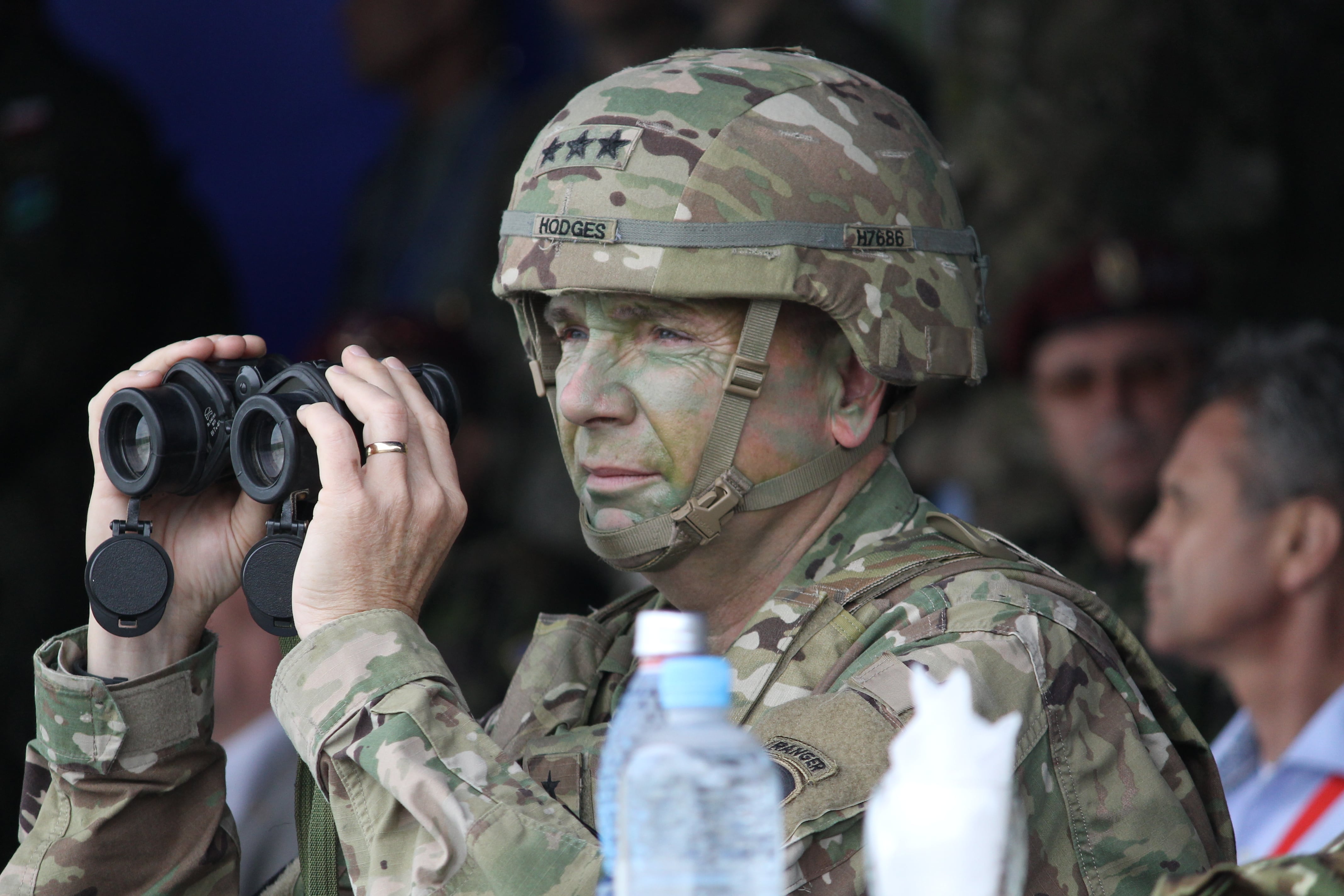As NATO defense ministers meet in Brussels next week to set the stage for the 2018 NATO summit, key issues will include defense burden-sharing and NATO’s role to the south in counterterrorism and refugee management. But strengthening deterrence to the East must remain the top priority for the alliance.
Russia’s recent Zapad 2017 and related exercises demonstrate the country’s ability to rapidly deploy up to 100,000 troops near the Baltic states. While many observers doubt the Kremlin would boldly attack a NATO nation, Putin has an aggressive track record, and history is replete with comparable blunders. The stronger NATO’s deterrent posture, the lower the risk of a tragic miscalculation in Moscow.
NATO has improved its military posture in the three years since Russia annexed Crimea and initiated conflict in Ukraine’s Donbas. At the 2014 Wales Summit, NATO created a brigade-sized Very High Readiness Joint Task Force, or VJTF, and small force integration unit designed to manage military reinforcement of Poland and the Baltic area. The U.S. separately forward-deployed four company-sized Army units.
At the 2016 Warsaw Summit, NATO took a major step by sending four NATO battle groups to the three Baltic states and Poland while the U.S. rotated an additional armored brigade. In the process, NATO has made important progress toward an effective deterrence by tripwire.
A recent visit to NATO’s Canadian-led battle group northeast of Riga, however, highlighted that steps taken at Wales and Warsaw are inadequate. NATO forces currently have no orders to fight unless NATO leaders take subsequent decisions, leaving troops vulnerable. The combined brigade has inadequate air defense, artillery and armor. Other Latvian units have even more limited capabilities. Faced with a Russian attack, this Latvian brigade would disperse, triggering a major conflict. The situation in the other two Baltic states appears similar.
This illustrates NATO’s current deterrence problem. Today’s ill-reinforced front-line units might hold out for several days against a concerted Russian assault of the kind rehearsed in Zapad. But reinforcements in the form of NATO land units would not arrive in time to prevent a Russian occupation. NATO’s VJTF is intended to be deployed in seven days, but could realistically take up to a month. Some U.S. and Polish troops are in the general region, but adequate ground forces from the U.S., Germany, France and the U.K. would not be in place for many months.
This probable time gap creates what we might call a “pause problem,” which NATO needs to fix at next year’s Brussels Summit. A quick Russian land-based occupation of the Baltic states followed by a pause in fighting and a Russian nuclear threat might be pursued in an effort to divide and freeze the alliance. That path to limited victory might tempt Russian President Vladimir Putin.
It appears unlikely that additional NATO brigades will be sent to the Baltic states to deal with this problem. But the pause problem can be mitigated if the alliance takes four basic steps at next year’s summit.
First, decision-making must be streamlined to avoid delay and division. Indications and warning mechanisms should be enhanced by improvements in national intelligence sharing, and the new NATO assistant secretary general for intelligence should be adequately resourced. The supreme allied commander Europe may need greater authority to deploy troops in time of crisis. NATO forces on the ground need clear rules of engagement on how to address a range of potential scenarios. Command structure reforms designed to control reinforcements are under consideration, and deadlines for political decision-making may be needed to avoid deadly delays.
Second, front-line NATO forces require adequate armor, artillery, air defense and rules of engagement. A robust security assistance package for the Baltic states could provide this. Civilian resilience can also be enhanced, improving the capacity of besieged populations to mount an unconventional defense complementing NATO’s conventional response. That will make it clear to Russia that front-line forces will resist and that an occupation will be costly.
Third, military reinforcements need to be able to get to the battle more quickly. Both the VJTF and national land forces need to improve their readiness. Logistics and legal impediments to forward deployment must be addressed, including the notion of a “military Schengen zone” to eliminate legal barriers to troop movements. Reinforcement capabilities need constant exercise, including from American-enhanced NATO air power, which will be critical to maintaining constant resistance to an attack, thereby reducing the prospect of a debilitating pause.
RELATED

And fourth, NATO must be prepared to deal with Russian high-end threats, including sophisticated air-defense and ground-attack missiles designed to deny NATO forces access to the region. Then there is Russia’s nuclear threat based on its “escalate to de-escalate” nuclear doctrine. NATO will need to be clear that it will not allow Russia to maintain sanctuaries like Kaliningrad if Russia starts a conflict and that NATO has adequate nuclear deterrent plans — and political will — to counter a Russian first nuclear strike.
As this deterrent is built, renewed efforts are needed to avoid Russian misinterpretation. NATO leaders will need adequate authority to discuss defense posture, transparent military exercises, threat assessments and incident management with their Russian counterparts.
With a package like this agreed upon at the 2018 NATO summit, the alliance should be better positioned to deter the unthinkable.
Hans Binnendijk is a senior fellow at the School for Advanced International Studies and an adjunct political scientist at the Rand think tank. He has served in several senior U.S. government posts including special assistant to the president for defense policy. Anika Binnendijk is a political scientist at Rand and has served in the Office of the Secretary of Defense and the U.S. State Department’s policy planning office.








